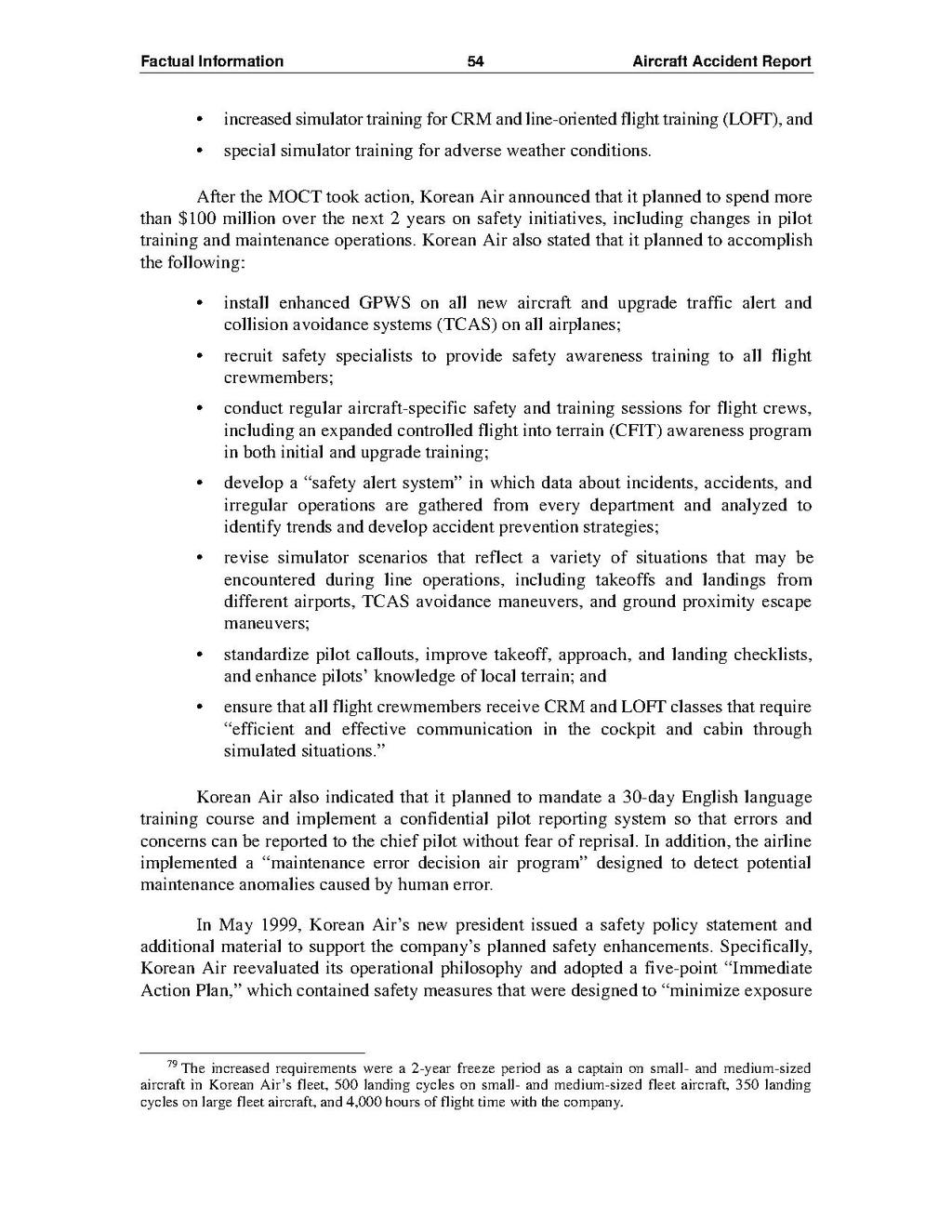- increased simulator training for CRM and line-oriented flight training (LOFT), and
- special simulator training for adverse weather conditions.
After the MOCT took action, Korean Air announced that it planned to spend more than $100 million over the next 2 years on safety initiatives, including changes in pilot training and maintenance operations. Korean Air also stated that it planned to accomplish the following:
- install enhanced GPWS on all new aircraft and upgrade traffic alert and collision avoidance systems (TCAS) on all airplanes;
- recruit safety specialists to provide safety awareness training to all flight crewmembers;
- conduct regular aircraft-specific safety and training sessions for flight crews, including an expanded controlled flight into terrain (CFIT) awareness program in both initial and upgrade training;
- develop a "safety alert system" in which data about incidents, accidents, and irregular operations are gathered from every department and analyzed to identify trends and develop accident prevention strategies;
- revise simulator scenarios that reflect a variety of situations that may be encountered during line operations, including takeoffs and landings from different airports, TCAS avoidance maneuvers, and ground proximity escape maneuvers;
- standardize pilot callouts, improve takeoff, approach, and landing checklists, and enhance pilots' knowledge of local terrain; and
- ensure that all flight crewmembers receive CRM and LOFT classes that require "efficient and effective communication in the cockpit and cabin through simulated situations."
Korean Air also indicated that it planned to mandate a 30-day English language training course and implement a confidential pilot reporting system so that errors and concerns can be reported to the chief pilot without fear of reprisal. In addition, the airline implemented a "maintenance error decision air program" designed to detect potential maintenance anomalies caused by human error.
In May 1999, Korean Air's new president issued a safety policy statement and additional material to support the company's planned safety enhancements. Specifically, Korean Air reevaluated its operational philosophy and adopted a five-point "Immediate Action Plan," which contained safety measures that were designed to "minimize exposure
